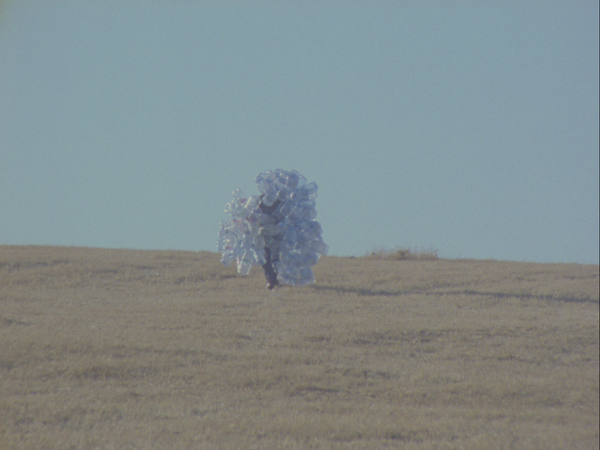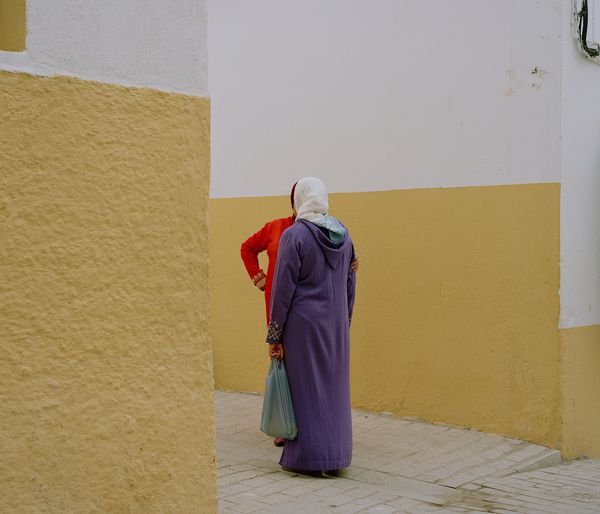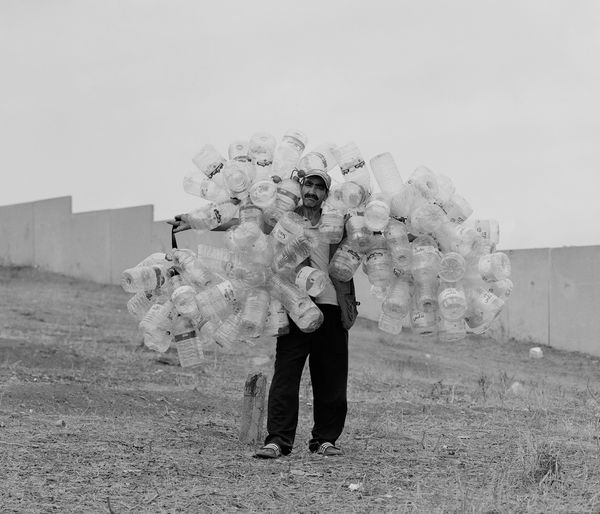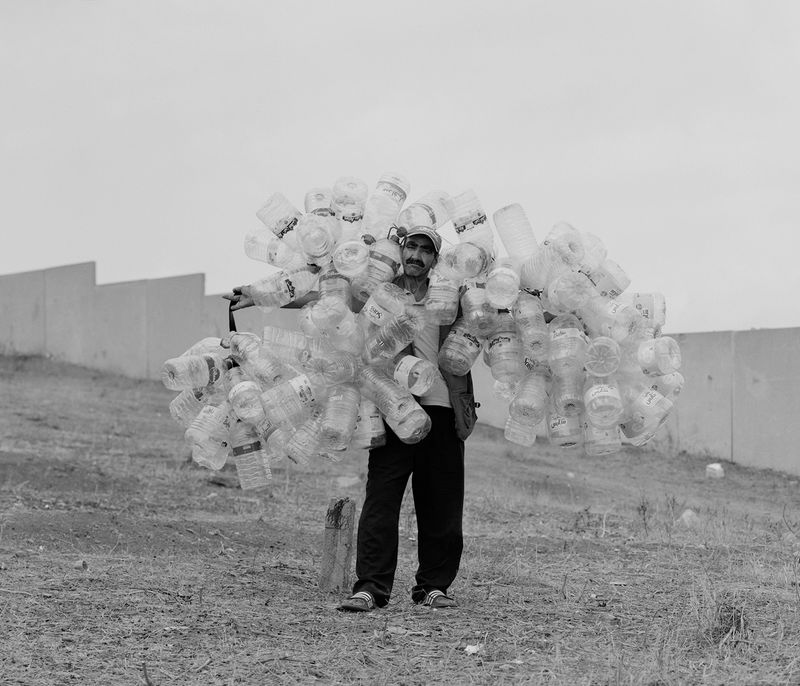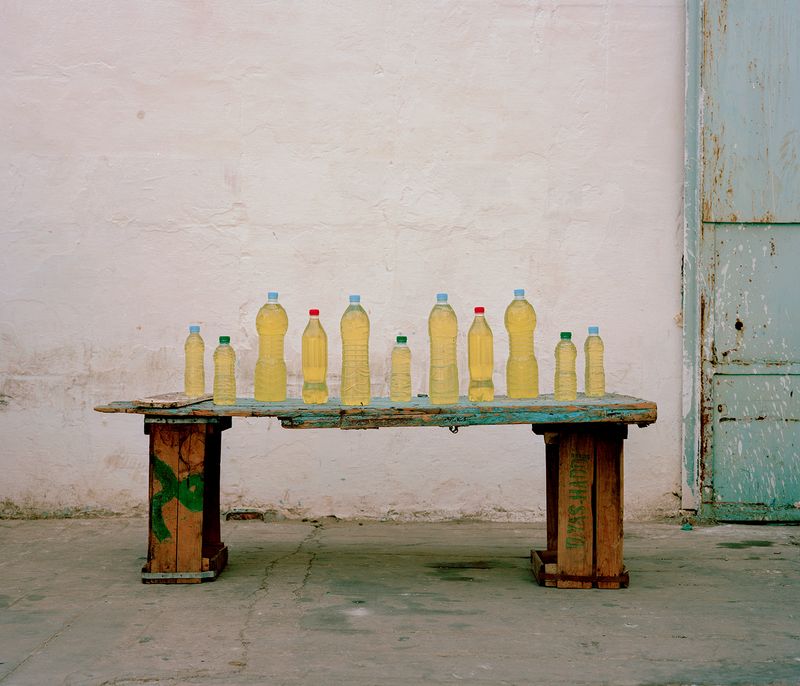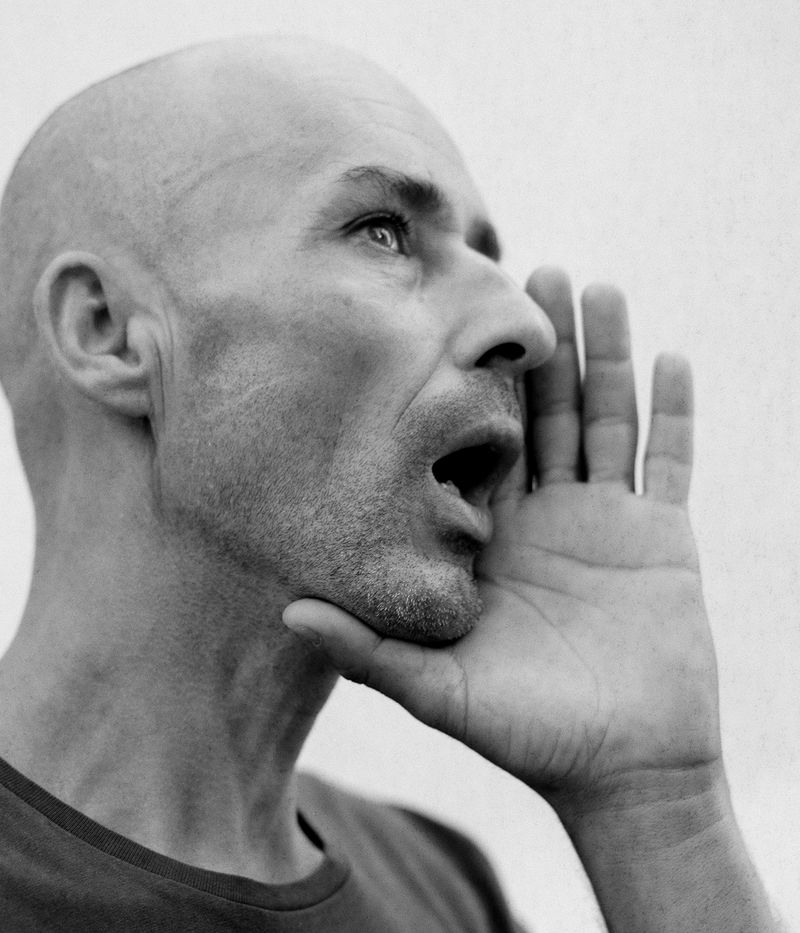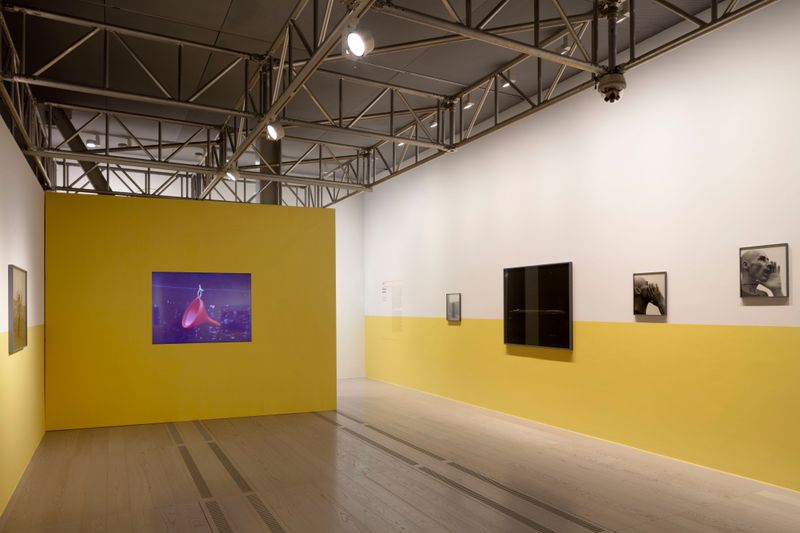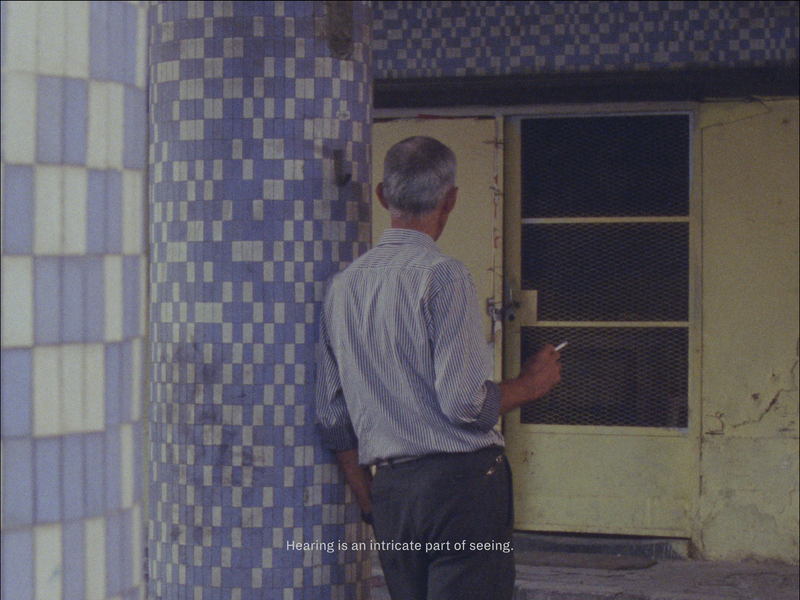Hicham Gardaf On The Disappearance Of Tangier's Bleach Sellers
-
Published11 Apr 2023
-
Author
In Praise of Slowness is an ode to disappearance. Looking at the vanishing of a traditional job, Gardaf reflects on its disruptive power over capitalism.
It’s the beginning of the day. A man, all covered in plastic bottles, walks towards the gates of a city. He looks like some sort of mythological creature. The city is Tangier, Morocco, and the man is a bleach seller. This is how the 16mm video, part of Hicham Gardaf’s multimedia body of work In Praise of Slowness, starts.
In a Tangier undergoing unprecedented urban, technological and social revolution, the bleach seller is a job on the brink of vanishing. The aim of Gardaf’s work - a search for permanence, a praise of resistance - immediately reminds me of The Lost World, Vittorio De Seta’s series of short documentaries shot between 1955 and 1959. All around Southern Italy, De Seta captured traditions he understood would soon be gone. In Praise of Slowness is, just as equally, an ode to something which is about to fade.
How to show disappearance? The question permeates all layers of Gardaf’s work. Here, bleach serves him as a metaphor: “Bleach is a chemical sometimes used in traditional photography to make the image vanish”, Gardaf explains, “it is something making things disappear while being a practice that is disappearing, too”. Can images have disappearance as a determining quality? “I was trying to find hints on disappearance”, he says. “One of my photographs shows two women having a conversation that you can’t see. I liked the idea of them merging into each other, becoming one person. Then there is a black and white diptych of a table: in one picture, there are bleach bottles on it. In the other, the bottles are gone”.
What is left out of Gardaf’s photographic images and video frames is as important as the few, selected elements he shows us. Sometimes, it’s exactly absences that matter the most: what does a city look like if you close your eyes?
A sequence of the video shows still frames of desert streets. We listen to the repetitive scream of a bleach seller: “Nadafa, l’ouqda, javel. Lejía, l’ouqda, javel” - cleanliness, concentrated bleach, bleach; bleach, concentrated bleach, bleach. Then the screen turns black. Gardaf’s voice starts telling us a story. During childhood he would lie down and wait for the bleach seller to pass by, his eyes closed, his breath quiet. Sounds before unheard started amplifying. The more he focused, the more accurately he could locate their source. Twenty years later, he finds himself doing the same: “The ears tell the eyes where to look”, his voice repeats over the video. I ask him whether this statement could mean something to his practice, too. “I realised that in order to found bleachers, I had to follow the sound”, he tells me, “so this idea of the ear guiding the eye, and not the other way around, came”. “I think I was getting a bit fed up with photography”, he adds. “Most of my projects over the last five years were focused on architecture and urbanism. In architecture, everything always revolves around the idea of vision: you talk of buildings from the perspective of images. Two crucial books inspired me to think of the city somehow differently - The Eyes of The Skin by Juhani Pallasmaa, and Quantum Listening by Pauline Oliveros. I started to work a lot with field recordings in the streets. I wanted to create an archive of different sounds, trying to experience the city without images”.
A diptych shows a man shouting, his hand close to the open mouth, amplifying his scream. “I was looking at ways of expressing, translating sound into images. I kept thinking of Bruno Munari’s Supplement to the Italian dictionary - of the way gestures can express something we all understand”, Gardaf says.
The exhibition space at MAST Foundation presents In Praise of Slowness’ on a white and yellow background. “I painted the walls in a similar way as the streets in the old town: halfway, in two different colors. The space had to resonate with the actual streets where it was made”, Gardaf explains. The video runs on a screen hidden by a wall. All around it is the condensed selection of large-format photographs. “I wanted to create photographs that are not reproductions of the film”, he says, “and as I wanted them to work separately, I made them separately - I was never taking the camera when I was filming, and the other way around”. “With photography, I produce very little”, he adds, “I had a notebook where I listed the images I was looking for, describing exactly how they should be. In total, they are 15 or so. It wasn’t really about going to the street, documenting, trying to find things, but it was more about images that I wanted to make. Not much editing was needed afterward”.
Gardaf’s approach to photography is about precision, care, and slowness. The slow pace making the title is the reason why he started looking at bleachers in the first place: “I wanted to work with sellers that come to your house. As consumers, we have to wait for them, without knowing when they’ll come. It’s always different days, different times. They are disrupting, slowing down the process of consumption in the capitalistic culture: this is what I find beautiful about them - that they are resisting”.
Can we find modes of resistance in photography, too? If political power is to be found in the slowness of the bleach sellers’ daily business, something of it seems to be subtly penetrating Gardaf’s practice, too. “I like to slow down things”, Gardaf says. “I work with film, which is itself a way of resisting the overproduction of images”. Describing what his six months in Tangier were like, he tells me: “I pay a lot of attention to detail, and light. I want to first see what different places look like at a certain time of the day. I was doing sound recordings, and then I started filming scenes in empty locations. When I found the people, I returned and filmed with them. The photographs came later, at the end. They were generally staged, but based on actual scenes: on real images I saw, and then reproduced”.
Winner of this edition of MAST Photography Grant On Industry And Work, In Praise of Slowness is on show at MAST Foundation (Bologna, Italy) for an exhibition reuniting the work of all Grant's finalists since 2008. Next to Gardaf's work are projects from this edition's finalists Farah Al Qasimi, Lebohang Kganye, Maria Mavropoulou, and Salvatore Vitale. The exhibition is open until May 1st.
--------------
All photos © Hicham Gardaf
--------------
Hicham Gardaf (b. 1989) works across photography, film and installation. A large part of Hicham’s practice looks into transformations of contemporary landscape in relation to time, space, and politics of place. He is drawn to the social spaces we inhabit such as buildings, streets and cities; and researches practices we apply to these places by reshaping, appropriating and controlling them. His work was exhibited at Guest Projects, London; MACAAL, Marrakech; Beit Beirut, Beirut; La Friche La Belle de Mai, Marseille; Bibliothèque Nationale de France and Institut du Monde Arabe, Paris.
--------------
Camilla Marrese (b.1998) is a photographer and designer based between Italy and The Netherlands, about to graduate from Design Academy Eindhoven's MA in Information Design (NL). Her work, often realized in a duo with Gabriele Chiapparini, was exhibited in several festivals and galleries including Fotografia Europea, Kranj Photo Fest, and PhMuseum Lab.
